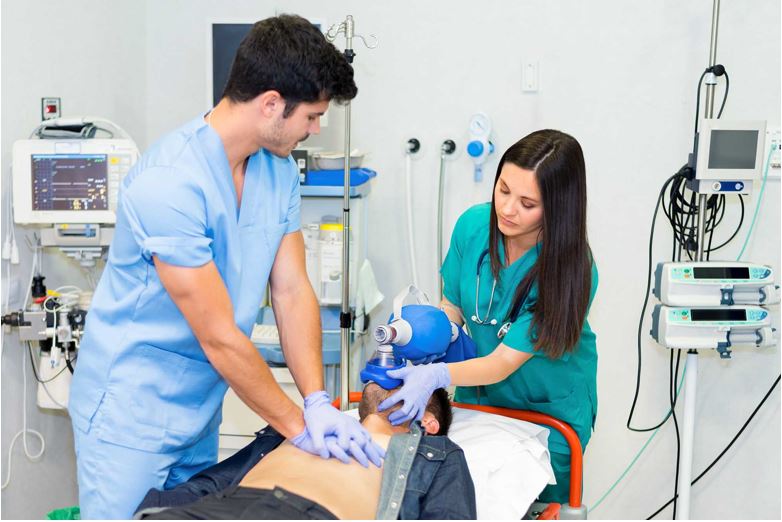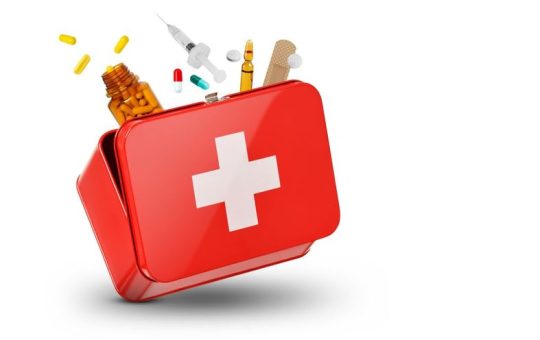
Basic Life Support (BLS)
Course Overview
The Basic Life Support (BLS) course is designed to provide essential training for responding to life-threatening emergencies. It focuses on critical life-saving skills, including cardiopulmonary resuscitation (CPR), airway management, and use of an Automated External Defibrillator (AED). This course is suitable for healthcare professionals, first responders, and anyone who may need to act in an emergency. It emphasizes hands-on practice and adherence to international guidelines for emergency response.
Benefits
- Life-Saving Skills: Learn to respond effectively in cardiac and respiratory emergencies.
- Professional Certification: Gain recognition for BLS skills, enhancing career prospects.
- Preparedness: Be ready to act confidently during critical situations in workplaces or public settings.
- Team Coordination: Improve communication and teamwork in emergency response scenarios.
- Enhanced Compliance: Meet healthcare and workplace safety requirements.
Learning Outcomes
Upon completing the course, participants will:
- Understand the principles of Basic Life Support and the Chain of Survival.
- Perform high-quality CPR for adults, children, and infants.
- Effectively use an Automated External Defibrillator (AED).
- Recognize and respond to choking emergencies.
- Manage airway obstructions and provide rescue breathing.
- Coordinate and communicate with emergency medical services during an incident.
Study Units
Unit 1: Introduction to Basic Life Support
- The Chain of Survival and its importance.
- Identifying life-threatening situations.
- Legal and ethical considerations in emergency care.
Unit 2: Cardiopulmonary Resuscitation (CPR)
- Techniques for performing CPR on adults, children, and infants.
- Adjusting CPR for single and two-rescuer scenarios.
- Recognizing signs of cardiac arrest and responding promptly.
Unit 3: Automated External Defibrillator (AED)
- Understanding the function and use of AEDs.
- Steps for safe and effective defibrillation.
- Troubleshooting common AED issues during emergencies.
Unit 4: Airway Management
- Techniques for opening airways in unconscious patients.
- Managing choking incidents using abdominal thrusts and back blows.
- Providing rescue breaths and ensuring proper ventilation.
Unit 5: Team Dynamics in Emergencies
- Roles and responsibilities in a team-based response.
- Effective communication during high-pressure situations.
- Coordinating with medical professionals and first responders.
Career Progression
Completing the Basic Life Support (BLS) course opens pathways to:
- Advanced Life Support (ALS): Progress to more advanced certifications for healthcare professionals.
- Emergency Medical Responder (EMR): Step into emergency pre-hospital care roles.
- First Aid and CPR Instructor: Teach life-saving skills to others.
- Healthcare and Safety Roles: Meet requirements for careers in healthcare, public safety, and corporate environments.
- Workplace Safety Advocate: Enhance safety programs by integrating BLS training.
This course is essential for individuals in healthcare, emergency services, and safety-critical industries. It also benefits anyone wishing to acquire vital skills to save lives in emergencies.
Our assessment process is designed to ensure every learner achieves the required level of knowledge, skills, and understanding outlined in each course unit.
Purpose of Assessment
Assessment helps measure how well a learner has met the learning outcomes. It ensures consistency, quality, and fairness across all learners.
What Learners Need to Do
Learners must provide clear evidence that shows they have met all the learning outcomes and assessment criteria for each unit. This evidence can take different forms depending on the course and type of learning.
Types of Acceptable Evidence
Assignments, reports, or projects
Worksheets or written tasks
Portfolios of practical work
Answers to oral or written questions
Test or exam papers
Understanding the Structure
Learning outcomes explain what learners should know, understand, or be able to do.
Assessment criteria set the standard learners must meet to achieve each learning outcome.
Assessment Guidelines
All assessment must be authentic, current, and relevant to the unit.
Evidence must match each assessment criterion clearly.
Plagiarism or copied work is not accepted.
All learners must complete assessments within the given timelines.
Where applicable, assessments may be reviewed or verified by internal or external quality assurers.
Full learning outcomes and assessment criteria for each qualification are available from page 8 of the course handbook.
Top Courses
No results found.
Related Courses
Let's Get in touch
Deleting Course Review
Course Access
This course is password protected. To access it please enter your password below:



